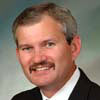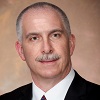Perspectives on the Michigan Underground Storage Tank Cleanup Fund
(Published – Michigan Banker – September 2015) – Since being signed into law in December of 2014, the Michigan Underground Storage Tank (UST) Cleanup Fund has been met with cautious enthusiasm. Michigan, as one of the top five states with the most open leaking UST sites, undoubtedly needs the MUSTA fund. However, there have been concerns that the new fund might have the same shortcomings as the previous, which became insolvent in 1995.
The fund seeks to reimburse owners or operators for corrective actions on releases from leaking UST systems to achieve compliance with Part 213 (the law that regulates leaking USTs) and assist in meeting the EPA’s financial responsibility requirements.
The UST fund Authority, recently christened MUSTA (Michigan Underground Storage Tank Authority), hs sought to quell any concerns by applying lessons learned from the previous fund, incorporating concepts from private insurance, maintaining a formal timeline and holding regular meetings to establish the MUSTA fund’s policies and procedures to ensure a smooth roll out and a sustainable program
We’ve gathered a panel of experts to discuss key points of the MUSTA fund and bring readers up to date after its August board meeting:
- Mark Griffin, Mark Griffin is the President of the Michigan Petroleum Association/Michigan Association of Convenience Stores or MPA/MACS
- Clifford Knaggs, President of Knaggs, Harter, Brake & Schneider, P.C.. Legal counsel to the UST Cleanup Advisory Board.
- Mark A. Williams, President, Michigan Certified Development Corp., provider of SBA 504 financing throughout Michigan
- Pete Bosanic, President, and Mike Kulka, CEO, PM Environmental Inc., Environmental and Engineering services provider throughout Michigan.
- Linda Salas, Credit Manager, Commercial Alliance
- Ryan Kroge, VP, Senior SBA Lending Specialist, Huntington Bank.
Is the MUSTA fund still on target for October 1?
 Bosanic: During the last MUSTA board meeting, the October 1 date was set as the goal for the EPA application, with anticipated approval by January 1, 2016. (Peter Bosniac photo at right)
Bosanic: During the last MUSTA board meeting, the October 1 date was set as the goal for the EPA application, with anticipated approval by January 1, 2016. (Peter Bosniac photo at right)
Griffin: October 1st was always a pie-in-the-sky date. It did put a sense of urgency into the process that was necessary to get us to where we are today. We don’t want to rush into something that turns bad because we were in too much of a hurry. Owner/operators (O/O) have done without a fund since 1995, now they just need to wait a few more weeks.
Has a Fund Administrator been chosen?
Bosanic: Yes. Robert Reisner, long-term Unit Chief of the MDEQ Remediation and Redevelopment Division, was hired on as the fund administrator. Bob was selected from over 50 applicants for the position and is the right person for the job. He was involved with the previous MUSTFA fund early on and he has a good career at the state.
What are some of the most pressing tasks to get the MUSTA fund inoperation?
 Knaggs: We have completed the steps of appointing the Board of Directors, electing the Chairman of the BOD, and engaging a fund administrator. MUSTA will now need to adopt its policies, procedures and forms and create and approve the schedule of costs. As important, the Authority must seek approval of the MUSTA fund as financial responsibility (FR) from the US Environmental Protection Agency (EPA). The application process is underway and the MUSTA fund will be considered “conditionally approved” once the application is submitted to the EPA Region V Office of Underground Storage Tanks. (Cliff Knaggs photo at right)
Knaggs: We have completed the steps of appointing the Board of Directors, electing the Chairman of the BOD, and engaging a fund administrator. MUSTA will now need to adopt its policies, procedures and forms and create and approve the schedule of costs. As important, the Authority must seek approval of the MUSTA fund as financial responsibility (FR) from the US Environmental Protection Agency (EPA). The application process is underway and the MUSTA fund will be considered “conditionally approved” once the application is submitted to the EPA Region V Office of Underground Storage Tanks. (Cliff Knaggs photo at right)
What lessons were learned from MUSTFA and how were they/will they be incorporated into the new fund?

Griffin: To a certain extent MUSTFA got a bad rap. It was the most successful cleanup program in the history of Michigan. Unfortunately, it also spent more money than it generated. That is the number one thing that we tried to protect against when designing the new Underground Storage Tank Cleanup Fund. We built in cost containment processes, we streamlined others. By putting the fund under the oversight of an Authority, because we also hope to avoid the bureaucratic obstacles we see with some government-only programs. (Mark Griffin photo at right)
Knaggs: The MUSTFA program far exceeded the minimum FR requirements established by the EPA in 1988. Under MUSTFA, and O/O had access to $1 Million for each claim, which meant that if an O/O had 3 claims, it had $3 Million in coverage. The EPA requirement, however, is that an O/O of 100 USTs or fewer have an aggregate of $1 Million coverage. The new fund provides for this minimum level of coverage, which should help maintain financial viability.
Which releases will be covered?
Griffin: The MUSTA fund is only for newly-discovered releases that have been found after December 30, 2014. It will not cover old historical releases. There just isn’t enough money collected by the RPF to cover new releases, old release and orphan sites, among others.
What are the details on the funding of the USTF?
Griffin: The USTF is funded by the first $20 million collected annually from the Refined Petroleum Fund (RPF). Since it was created during the 2014/2015 State fiscal year, the first $20 million has been accruing into the Fund and is expected to be a sufficient amount of money at the outset of operations.
How will expenses be reimbursed?
Bosanic: The MUSTA has established a committee to evaluate UST cost items categories that will exist and the method of establishing costs, such as a cost schedule, competitive bids, O/O mark up, etc.
What will be some of the duties of MUSTA?
Griffin: The Authority is there to oversee the activities of the fund Administrator, to hear appeals, ultimately to represent the people of Michigan to ensure the fund puts its resources to the uses that the statute envisions.
Knaggs: MUSTA is created within the Department of Environmental Quality (MDEQ) and is charged to exercise its prescribed statutory power, financial duties, and financial functions independently of the director of MDEQ or any other department. The Authority is governed by a board of directors (BOD) appointed by the Governor and has all the power that is necessary or convenient to implement Part 215 and the purposes, objectives and powers delegated to it under any law or executive order. Most importantly, the BOD shall establish a schedule of costs for corrective action; assess the potential demand for payment of claims and make recommendations to the legislature and the Governor to issue bonds or notes for additional financing; make annual reports to the legislature on the sources of funding and the financial status of the fund and hear and rule on appeals of claim denials.
How does a claim would work for an operator? How do the deductibles and claims work?
Knaggs: The O/O will file a claim with the fund administrator with supporting documentation on forms to be created by the administrator. An O/O of 7 or fewer USTs may “buy down” the deductible amount to $15,000.00 by paying an additional $500.00 per tank annual fee. In order to guard against large UST owners creating individual entities to own and operate individual sites and thus take advantage of the deductible buy down, all the tanks owned or operated by the O/O and all of its affiliates are counted to determine the deductible amount. There is a deductible for each claim, so if an O/O had 3 claims, it would have to pay 3 deductible amounts prior to being eligible to submit a claim.
Is this going to be good for traditional and SBA lending?
Williams: Yes, this will be good for SBA lending as it will provide another tool that can be used to help bring contaminated properties into compliance with SBA regulations.
Kroge: This is huge for SBA lending because, when it comes to environmental due diligence, the restrictions are tighter and the requirements more stringent than traditional lenders. I think it will help relieve the financial burden for investigating, assessing, and resolving these issues, which is a requirement under SBA protocol.
Salas: As the final requirements evolve, it is definitely a tool lending institutions can take into consideration to mitigate potential risk in lending to this industry.
Will the SBA recognize this fund to satisfy a mitigating factor?
Williams: One of the mitigating factors is reliance on Clean-up Funds. Each circumstance is unique and a variety of conditions must be met, but it does look like the Michigan UST Fund will meet the requirements for this mitigating factor. The BEA/Due Care process will likely remain the most effective for getting 504 projects done however this will offer another potential avenue if the BEA or other mitigating factors will not work.
What reaction are you seeing to the MUSTA fund from your retail petroleum clients?
Kulka: I have heard nothing but positive responses form large grocery chains that sell gas, logistic companies with multiple fueling locations, car dealerships, and even developers who may be able to use the fund when they redevelop hard corner with a gas station.
Pete Bosanic, Cliff Knaggs and Mark Griffin will be holding a free webinar on November 19th at 1 PM EST to further discuss the Michigan UST Cleanup Fund. Click here to receive an invitation.
Publication Details
Date
September 24, 2015



